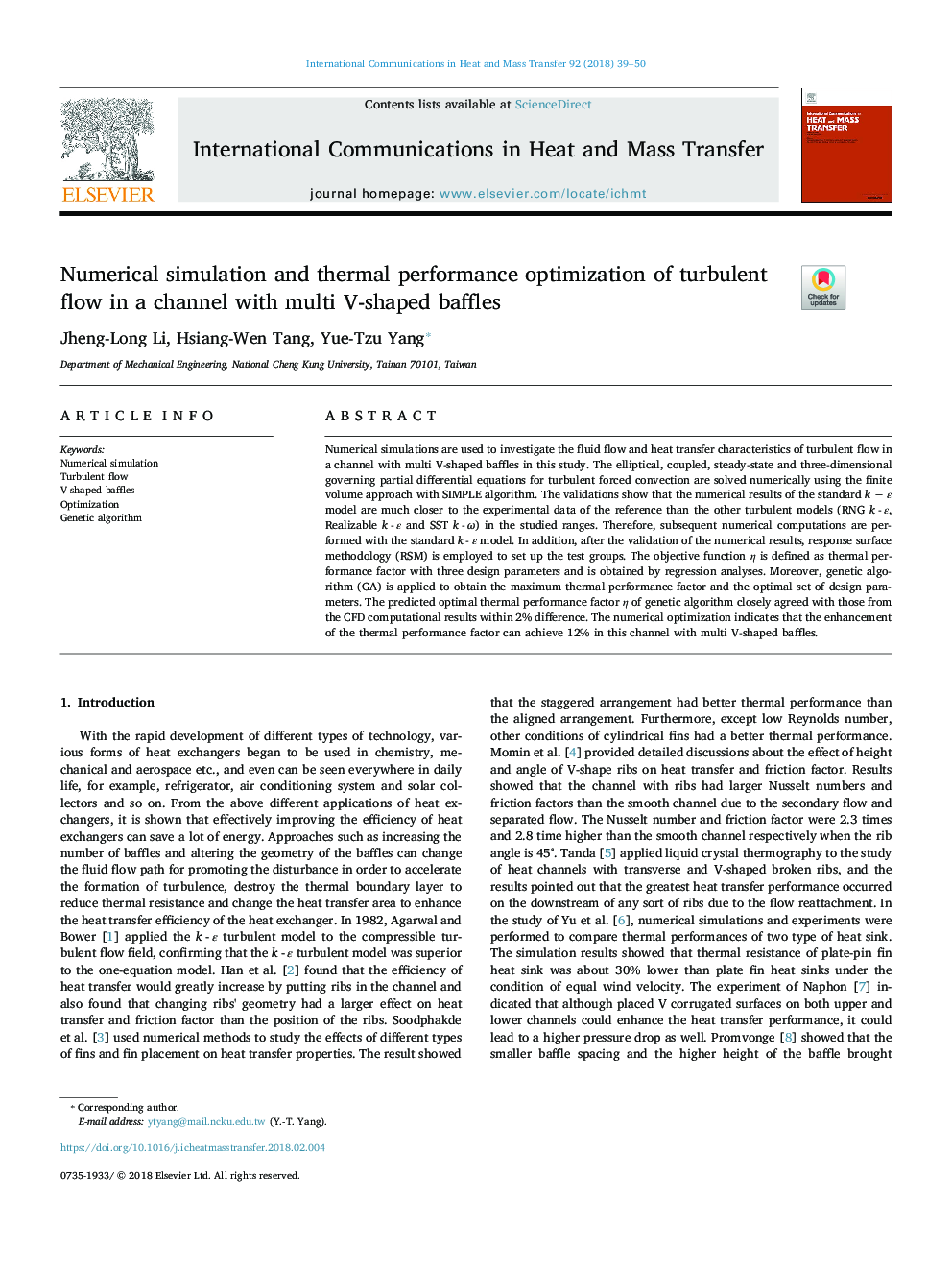| Article ID | Journal | Published Year | Pages | File Type |
|---|---|---|---|---|
| 7052968 | International Communications in Heat and Mass Transfer | 2018 | 12 Pages |
Abstract
Numerical simulations are used to investigate the fluid flow and heat transfer characteristics of turbulent flow in a channel with multi V-shaped baffles in this study. The elliptical, coupled, steady-state and three-dimensional governing partial differential equations for turbulent forced convection are solved numerically using the finite volume approach with SIMPLE algorithm. The validations show that the numerical results of the standard kâ¯ââ¯Îµ model are much closer to the experimental data of the reference than the other turbulent models (RNG kâ¯ââ¯Îµ, Realizable kâ¯ââ¯Îµ and SST kâ¯ââ¯Ï) in the studied ranges. Therefore, subsequent numerical computations are performed with the standard kâ¯ââ¯Îµ model. In addition, after the validation of the numerical results, response surface methodology (RSM) is employed to set up the test groups. The objective function η is defined as thermal performance factor with three design parameters and is obtained by regression analyses. Moreover, genetic algorithm (GA) is applied to obtain the maximum thermal performance factor and the optimal set of design parameters. The predicted optimal thermal performance factor η of genetic algorithm closely agreed with those from the CFD computational results within 2% difference. The numerical optimization indicates that the enhancement of the thermal performance factor can achieve 12% in this channel with multi V-shaped baffles.
Related Topics
Physical Sciences and Engineering
Chemical Engineering
Fluid Flow and Transfer Processes
Authors
Jheng-Long Li, Hsiang-Wen Tang, Yue-Tzu Yang,
